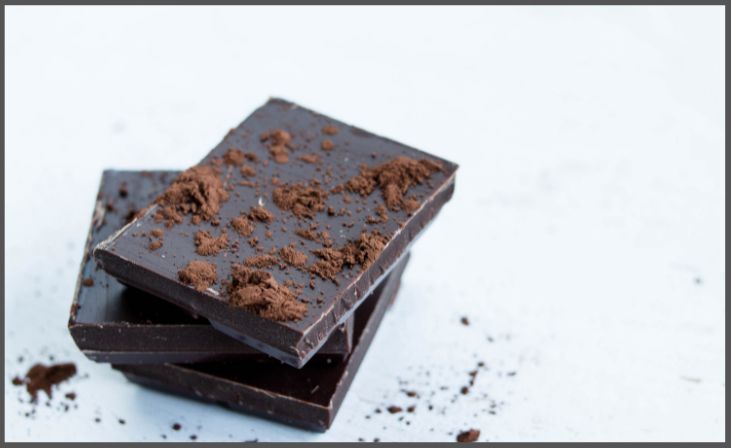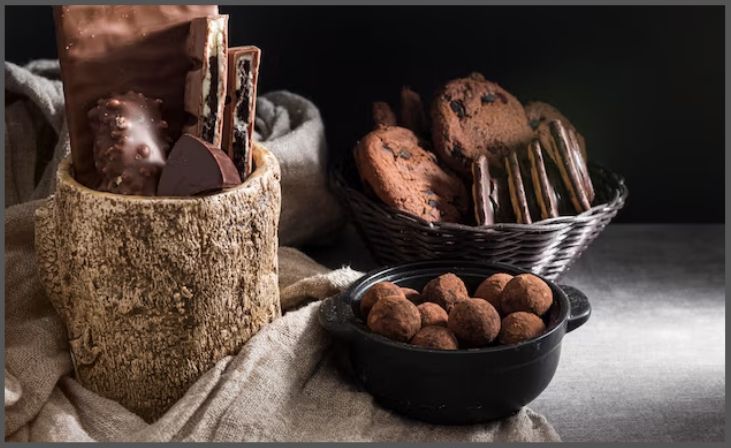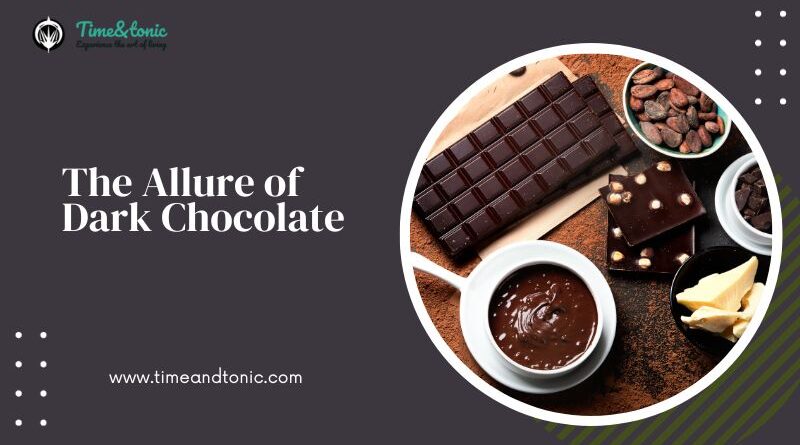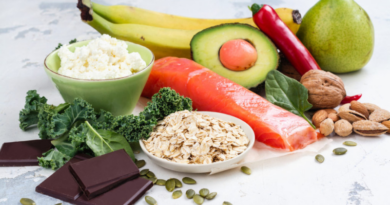The Allure of Dark Chocolate
The Allure of Dark Chocolate – Dark chocolate, with its rich, velvety texture and complex, bittersweet flavor, has a timeless allure that captivates the senses and palates of chocolate enthusiasts worldwide. In this delectable journey through the world of dark chocolate, we’ll explore its history, health benefits, and the sheer delight it brings to our taste buds.
Beyond its decadent taste, dark chocolate offers a multitude of potential health advantages, from its antioxidant-rich properties to its potential heart-boosting effects and mood-enhancing qualities. But what makes dark chocolate truly fascinating is the intricate chemistry that underlies its taste, aroma, and texture.
As we delve deeper, we’ll discover the diverse uses of dark chocolate in culinary creations, its cultural significance across the globe, and the contrasting worlds of artisanal and commercial production. Moreover, we’ll explore how dark chocolate engages all our senses, from its lustrous appearance to its heavenly aroma and the way it melts enticingly in your mouth.
So, whether you’re a seasoned dark chocolate connoisseur or just starting to appreciate its allure, join us on this journey to uncover the secrets, myths, and future trends surrounding this beloved treat. Brace yourself for a delightful adventure into the world of dark chocolate that promises to be as satisfying as the first bite of a perfectly crafted dark chocolate bar.
Definition and Brief History of Dark Chocolate
Dark chocolate, often referred to as “black chocolate” or “plain chocolate,” is a delectable treat made primarily from cocoa solids, cocoa butter, and sugar. What sets dark chocolate apart from its milk chocolate counterpart is its reduced sugar content and higher cocoa content. Typically, dark chocolate contains 50% to 90% cocoa solids, giving it a rich, intense cocoa flavor and a less sweet taste.
The history of dark chocolate dates back to ancient Mesoamerican civilizations, such as the Aztecs and Mayans, who were the first to cultivate and consume cocoa beans. They brewed a bitter beverage from cocoa, which was vastly different from the sweetened chocolate we know today. It wasn’t until the European colonization of the Americas in the 16th century that cocoa was introduced to Europe, and sugar was added to create the sweeter, more palatable dark chocolate we savor today. Since then, dark chocolate has evolved into a beloved global delicacy, celebrated for its complexity and the Allure it offers to chocolate aficionados.
Also, Read – Best And Easy Casserole Recipes
The Health Benefits of Dark Chocolate

Dark chocolate, often celebrated for its indulgent taste, also boasts an array of potential health benefits that may surprise you. While moderation is key, incorporating high-quality dark chocolate into your diet can offer several advantages for your well-being:
- Rich in Antioxidants: Dark chocolate is loaded with powerful antioxidants called flavonoids. These compounds help combat oxidative stress, reducing the risk of chronic diseases and aging.
- Heart Health: Regular consumption of dark chocolate may improve cardiovascular health. It can enhance blood flow, lower blood pressure, and reduce the risk of heart disease.
- Mood Enhancement: Dark chocolate contains compounds that stimulate the release of endorphins and serotonin in the brain, potentially improving mood and reducing stress.
- Brain Function: Flavonoids in dark chocolate may boost cognitive function and protect against age-related cognitive decline. They enhance blood flow to the brain, aiding concentration and memory.
- Mineral Rich: Dark chocolate is a source of essential minerals, including magnesium, copper, iron, and manganese, which are important for various bodily functions.
- Skin Protection: Some studies suggest that the flavonoids in dark chocolate may protect the skin from UV damage and improve skin hydration, contributing to a healthier complexion.
- Appetite Control: Consuming a small piece of dark chocolate before a meal may help curb your appetite, potentially reducing overall calorie intake.
- Diabetes Management: Dark chocolate may help improve insulin sensitivity, aiding in the management of diabetes. However, moderation is crucial for those with blood sugar concerns.
- Reduced Inflammation: The antioxidants in dark chocolate have anti-inflammatory properties, which can benefit those with inflammatory conditions.
- Improved Vision: Compounds in dark chocolate, such as flavonoids and theobromine, have been linked to improved vision and visual clarity.
Also, Read – Types of Pasta Sauce
Allure of Dark Chocolate: The Chemistry Behind the Taste
The allure of dark chocolate extends beyond its sumptuous appearance and rich aroma; it lies in the intricate chemistry that creates its complex, bittersweet flavor. Understanding the scientific aspects behind dark chocolate’s taste can deepen your appreciation for this delectable treat.
1. Cocoa Solids and Cocoa Butter: At the heart of dark chocolate’s allure are its primary ingredients: cocoa solids and cocoa butter. Cocoa solids are responsible for its distinctive flavor, while cocoa butter contributes to its smooth, melt-in-your-mouth texture.
2. Flavor Notes in Dark Chocolate: Dark chocolate’s flavor is a symphony of taste sensations. It’s marked by an initial burst of sweetness followed by a wave of complex, sometimes fruity, sometimes nutty, and often slightly earthy notes. These nuances are influenced by factors like the origin of the cocoa beans, the specific blend of bean varieties, and the chocolate-making process.
3. Cocoa Content: The percentage of cocoa solids in dark chocolate is a key determinant of its taste. Higher cocoa percentages result in a more intense, less sweet flavor. A bar labeled “70% cocoa” contains 70% cocoa solids and 30% other ingredients like sugar.
4. Roasting Process: Cocoa beans are roasted to develop their flavors. The duration and temperature of roasting influence the taste. Light roasting preserves fruity and acidic notes, while dark roasting enhances the chocolate’s bitterness and earthiness.
5. Conching: Conching is a critical step in chocolate production where the chocolate is continuously mixed and aerated. This process smooths the texture, refines the flavor, and reduces bitterness by breaking down some of the cocoa’s volatile compounds.
6. Fermentation: The fermentation of cocoa beans before roasting plays a role in flavor development. Microbes break down the beans’ sugars, transforming them into complex flavor compounds.
7. Tempering: Tempering is a process of carefully heating and cooling chocolate to stabilize its crystal structure. Proper tempering gives dark chocolate a glossy appearance and a satisfying snap when you break it.
8. Pairing Dark Chocolate with Other Flavors: The diverse flavor profile of dark chocolate makes it a versatile ingredient in both sweet and savory dishes. Its bitter-sweet notes can complement a wide range of ingredients, from fruits and nuts to spices and cheeses.
The Allure of Dark Chocolate: Artisanal vs. Commercial

Dark chocolate is a universally adored treat, but not all dark chocolates are created equal. When exploring the allure of dark chocolate, it’s important to distinguish between artisanal and commercial varieties, as they offer distinct experiences and qualities.
Artisanal Dark Chocolate: Craftsmanship and Authenticity
- Handcrafted Excellence: Artisanal dark chocolate is often handcrafted by skilled chocolatiers who are passionate about their craft. Each bar is a labor of love, meticulously made with attention to detail.
- Quality Ingredients: Artisanal chocolatiers prioritize high-quality ingredients, including premium cocoa beans and natural flavorings. These ingredients contribute to a more complex and refined taste.
- Unique Flavor Profiles: Artisanal chocolates often highlight the unique flavor profiles of specific cocoa bean origins. Single-origin chocolates, for instance, showcase the distinct characteristics of cocoa from a particular region.
- Small-Batch Production: Artisanal producers typically work in small batches, allowing them to maintain quality control and experiment with innovative flavors and textures.
- Ethical Sourcing: Many artisanal chocolatiers prioritize ethical and sustainable sourcing of cocoa beans, supporting fair trade practices and environmental sustainability.
- Limited Editions: Artisanal chocolates may offer limited-edition or seasonal varieties, making the experience of trying them akin to discovering a work of art.
Commercial Dark Chocolate: Accessibility and Consistency
- Mass Production: Commercial dark chocolate is produced on a larger scale, often by major confectionery companies. It is widely available in supermarkets and convenience stores.
- Consistency: Commercial dark chocolate brands strive for consistency in taste and texture across their products. This ensures that consumers know what to expect with each purchase.
- Affordability: Commercial dark chocolate tends to be more affordable than artisanal varieties, making it accessible to a broader range of consumers.
- Variety of Options: Commercial dark chocolate brands offer a wide range of products, from basic bars to filled chocolates, catering to diverse consumer preferences.
- Global Reach: Commercial dark chocolate is often available worldwide, allowing people from different regions to enjoy a consistent chocolate experience.
- Brand Reputation: Well-established commercial brands have a strong presence and reputation, providing consumers with a sense of trust and familiarity.
Conclusion
In the world of chocolate, the allure of dark chocolate is a timeless and enchanting story. From its rich history to its tantalizing taste, from its potential health benefits to its intricate chemistry, dark chocolate has woven its way into our hearts and lives. Whether you savor the handcrafted elegance of artisanal bars or the convenience of commercial varieties, the allure remains undeniably irresistible. So, indulge responsibly, explore the nuances of cocoa, and let the captivating allure of dark chocolate continue to delight your senses for years to come.
FAQs
Dark chocolate is a type of chocolate made from cocoa solids, cocoa butter, and sugar. It has a higher cocoa content and less sugar than milk chocolate, resulting in a bittersweet flavor.
Dark chocolate can have varying cocoa percentages, typically ranging from 50% to 90% or more. Higher percentages indicate more cocoa solids and a less sweet taste.
Dark chocolate is rich in antioxidants, which can benefit heart health, brain function, and skin. It may also improve mood and reduce stress when consumed in moderation.




